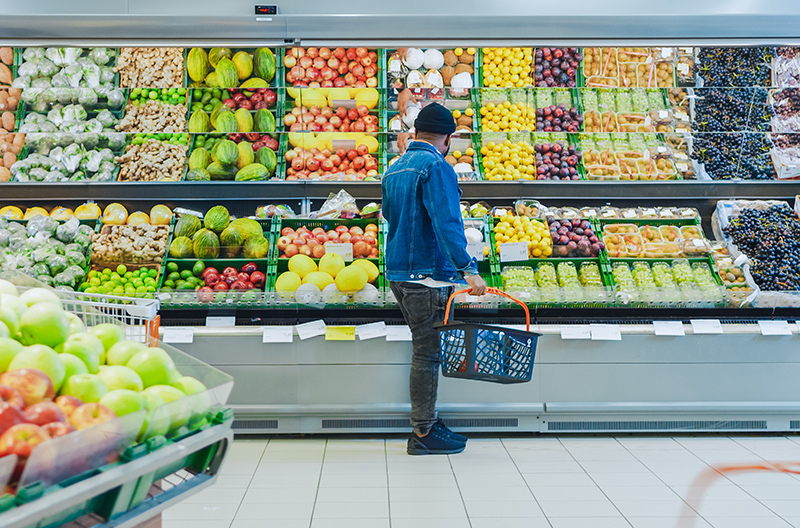Record inflation has been putting pressure on independent grocers as well as their customers, stretching folks’ spending power and retailers’ ability to deliver value.
There are signs that things are easing up, but is anyone feeling it yet?
The National Grocers Association hosted a recent webinar exploring current economic conditions driving the marketplace, what independent grocers can expect in the weeks and months ahead, and how they can effectively communicate those expectations to their consumers.
Speakers included Jeff Maurer, owner of Maurer’s Market IGA in Wisconsin Dells, Wis.; and Jennifer Bosma, owner of Harvest Market, with stores in Mendocino and Fort Bragg, in northern California. The discussion was moderated by John Ross, president and CEO of the Independent Grocers Alliance.
Here are some key takeaways from the discussion:
Retail rollercoaster
Commodity, economic and geopolitical instability have created a volatile world marketplace, Ross explained. At the end of August, the consumer price index was up 3.2 percent overall since June, with inflation up 4.9 percent for all food and 3.6 percent for food at home. By midyear, retail grocery sales were up 5.4 percent in dollars but down 2.6 percent in units.
Glimmers of hope
Despite the volatility, consumer confidence is inching upward, with unemployment flattening out as hourly wages rise, though personal savings remain low. Meanwhile, about a third of consumers expect their economic situation to improve over the next six months, while nearly 15 percent expect it to get worse and more than 12 percent of households in late June reported experiencing food insecurity.
Still, it depends
While Bosma reports one of her stores is close to national average sales trends and below at the other, Maurer says he’s down in dollar sales, citing a decline in summer tourist activity in the resort community where he operates, along with big-box competition and an increase in dining out.
Et tu, restaurants?
Ross noted restaurants are back up above 50 percent of all consumer food spending, regaining what it lost to grocery during the pandemic. Bosma, who asserted that folks are tired of COVID cooking, is fighting back with meal deals in her delis, offering a special price for an entrée with two sides that’s proving popular with her customers.
Ross argued that grocers face a “communications challenge” in demonstrating to consumers the value in price, variety and wholesomeness of grocery-based meals over restaurant selections.
The few, the proud
Availability of labor continues to be a challenge, though turnover appears to be improving, amid the appeal of joining the gig economy, in which a third of Americans have at least dabbled, Ross noted. And while grocers are paying more for a smaller pool of labor, availability of housing affordable to grocery workers has become an issue.
Margin call
There’s a wide gap between perception and reality among consumers when it comes to an independent grocer’s profit margin.
“It’s the most frustrating thing I’m going through – constant criticism from customers [about prices],” Maurer says, noting that tighter margins don’t help having to contend with higher payrolls, credit card swipe fees and energy costs.
“Our margins have slipped – we can’t absorb increases like we could before…I am as transparent as I can be with customers.”
Though promotions are fewer than before the pandemic, Maurer has events planned every week through the end of the year, “to keep customers engaged and excited, and show them value.”
For her part, Bosma has revived a pre-pandemic promo: everything 10 percent off, one day each month. “Our customers are grateful,” she says, also noting that nutrition incentives have helped cushion the blow of post-COVID reductions in SNAP.
Reasons to be optimistic
Despite a supply chain that has yet to fully recover (the grocers report fills of 80-90 percent), the panelists are hopeful that costs and prices will moderate over the next 12 months.
“As independents, we adapt, we pivot. I see our sales still growing,” Bosma says.
Maurer adds, “I think people will see the value of shopping with an independent and the services and support we give to the community.”
For more exclusive insights, view a recording of the complete webinar here.
Read more association news from The Shelby Report.

